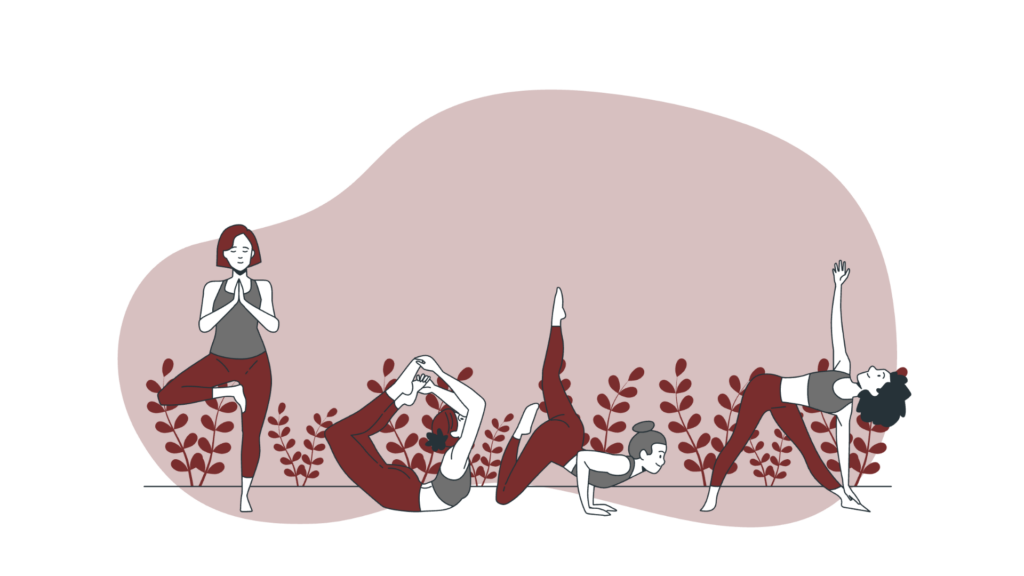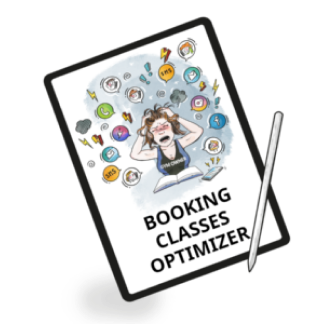So you love physical exercise and want to share your passion with others? Or maybe you think that group fitness instructors earn a lot and enjoy social respect? Is a gym instructor one of the best fitness jobs you may dream of?
Check out what to do to become one of the fitness professionals. Here are 8 steps to a new chapter in your life. Good luck!
Key Takeaways
- To lead individual or group classes, you must have appropriate certifications but also interpersonal skills in your teaching style.
- To work in the fitness industry, find employment at one of the gyms or fitness clubs, or start your own.
- Check the possible earnings of a fitness trainer on job portals or in the latest statistical data.
- Make your work in fitness easier with a gym software that manages bookings, payments and customer communication.
How to Become a Fitness Instructor
- Get Certified – Choose a reputable certification program (e.g., ACE, NASM, or ISSA).
- Complete Coursework – Study anatomy, physiology, and fitness principles.
- Gain Experience – Practice teaching classes or training clients.
- Pass the Exam – Successfully complete the certification exam.
- Stay Updated – Take continuing education courses to maintain certification.
- Build a Network – Connect with other fitness professionals and clients.
- Find Employment – Apply at gyms, wellness centers, or offer private training.
How to Become Fitness Classes Instructor: 8 Steps
Below we present 8 steps that may lead you to a career as:
- a group fitness instructor
- individual instructor in the fitness industry, running personal training sessions.
Have you already written a list of your personal trainer business names? No yet? go on! Join the fitness professionals, we wish you a fulfilling career!

Step 1: Check Your Fitness Instructor Skills
Before diving into certification or education, it’s important to evaluate your current fitness instructor skills. As a fitness professional, you’ll need motivational skills to inspire and encourage your clients.
Being able to effectively lead group fitness instruction is one of the most important skills. Ensure you’re comfortable guiding a class while maintaining energy and focus. Strong communication skills are essential for explaining exercise techniques clearly and keeping your gym health and safety on top level.
You’ll also need to use various motivational techniques to keep clients engaged and on track with their fitness goals. It’s important to be able to demonstrate exercises properly and adjust them based on different fitness levels within your class.
Assessing and improving these skills will help ensure you’re prepared to succeed as a fitness instructor.
Step 2. Check the Demand for Instructors
Before pursuing a career as a fitness instructor, it’s important to assess the demand for instructors in your area.
Nice: according to fitness industry statistics: the U.S. Bureau of Labor Statistics, employment for fitness trainers and instructors is expected to grow by 15% from 2021 to 2031, much faster than the average for all occupations.

You can also look into local gyms, fitness centers, and online platforms to gauge the demand. Industry reports and job boards (e.g., Indeed or Glassdoor) can provide insights into the specific demand in your region.
Step 3: Obtain the Necessary Qualifications and Certificates
To become a certified fitness instructor, you need to obtain a recognized certification.
- Where & How: There are several well-known organizations offering certifications in the U.S., including ACE (American Council on Exercise), NASM (National Academy of Sports Medicine), ISSA (International Sports Sciences Association), and AFAA (Athletics Fitness Association of America).
- Duration: Certification programs typically take 3-6 months, depending on the course intensity and your schedule.
- Cost: The cost ranges from $300 to $800, depending on the program and additional study materials.
- Example Institutions:
– ACE: www.acefitness.org, costs around $499–$899.
– NASM: www.nasm.org, costs around $499–$799. - Exams: After completing the coursework, you will need to pass an exam. Certification is usually valid for two years, after which continuing education and recertification are required.

Step 3a. University Studies as an Alternative to Certifications
While certification programs are the most common route to becoming a fitness instructor, university degrees can also prepare you for a career in fitness.
Degrees in fields such as Exercise Science, Kinesiology, Sports Medicine, or Physical Education often provide a strong foundation for a fitness instructor role. These degrees usually involve coursework in anatomy, physiology, biomechanics, nutrition, and fitness assessment, all of which are essential knowledge for a fitness instructor. It may be also helpful if you wish to become a health and fitness coach.
Examples of Relevant Degrees:
- Bachelor’s Degree in Exercise Science – Typically a 4-year program covering human physiology, exercise techniques, and fitness program design.
- Bachelor’s Degree in Kinesiology – A similar 4-year program focusing on the science of human movement, sports performance, and rehabilitation.
- Bachelor’s Degree in Sports Medicine – Focuses more on injury prevention, rehabilitation, and physical fitness.
Pros of University Studies:
- A degree provides in-depth academic knowledge that can be helpful for specialized roles in fitness or sports medicine.
- It may open doors to more advanced positions in rehabilitation or athletic training.
However, most fitness centers and gyms still prefer specific certifications (like NASM, ACE, etc.) for instructors, as these certifications are widely recognized in the fitness industry. If you hold a degree, you might still need to obtain a certification, especially if you want to teach certain types of fitness classes or provide personal training.
Cost and Duration:
- University degrees typically cost more and take longer (4 years) compared to certification programs, which are usually completed in a few months.
- For example, a Bachelor’s degree can cost anywhere from $10,000 to $50,000 per year, depending on the institution.
If you’re aiming to become a fitness instructor, university degrees can be an alternative, but they are often more time-consuming and expensive compared to certifications. Combining a degree with a certification can make you a highly competitive candidate, especially if you’re looking to work in specialized areas such as sports medicine or rehabilitation.
Step 4: Look for a Job or Maybe Start Your Own Gym?
- Finding Jobs: Search for jobs in local gyms, fitness studios, wellness centers, or online platforms. Networking through professional events and social media (especially LinkedIn) can help too.
- Starting Your Own Gym: If you have entrepreneurial aspirations, consider opening a gym. You’ll need to secure funding, find a location, purchase equipment, and market your business.
A Chance for a Beginner
Many individual or group fitness instructors start small by offering personal training services or group classes in rented spaces before expanding.
Step 5: Make Your Job Easier and Impress Future Employers
Download useful templates, like a fitness assessment form, that will make your work easier and performance higher.
To enhance your efficiency and impress employers, get familiar with using a gym management software. Gym management SaaS solutions like WodGuru help with client scheduling, payment processing, and tracking client progress.
These tools make managing classes, appointments, and client data easier while demonstrating your organizational skills.
Most important features of a gym management system are:
- Scheduling – enables users to plan and organize their workout sessions. Fitness scheduling software helps optimize time management for the gym.
- Membership Management – simplifies the administration of member profiles. Gym membership software streamlines communication and helps track membership statuses.
- Payment Processing – facilitates financial transactions. Gym billing software provides members with easy payment options while ensuring secure revenue management for fitness businesses.
- Attendance Tracking – provides insights into members’ attendance patterns. This feature allows gym owners or personal trainers to create tailored solutions for individual clients.
- Membership App for Booking – the gym booking system allows members to easily sign up for training sessions remotely.

Manage your gym
like a pro
Get more online bookings and increase your gym profit
Step 6: Check What Earnings You Can Count On
Are fitness instructors in the U.S. one of the highest paying fitness jobs? Well, they may earn an average hourly wage of around $20 to $50 per hour, depending on experience, certification, and location. According to the U.S. Bureau of Labor Statistics, the median annual wage for fitness trainers was approximately $40,510 in 2021.
However, personal trainers or those with specialized skills in high-demand areas can earn significantly more.

Step 7: Decide the Area of Your Specialization
There are different paths to pursue within fitness, each with varying qualifications:
- Group Fitness Instructor: Specializes in leading classes such as yoga, pilates, spinning, or aerobics. Certification may require specific courses in these areas (e.g., yoga certification from Yoga Alliance).
- Personal Trainer: Works one-on-one with clients. A general fitness instructor certification, such as those from ACE or NASM, is typically required.
- Fitness Instructor: A more general role that may include leading group fitness classes, personal training, or a combination of both.
- Each area has its own skill set and certifications. For group fitness, specialized training (like Zumba or spin) may be needed. Personal trainers generally need more in-depth knowledge of anatomy, kinesiology, and program design.
Step 8: Develop Yourself, Don't Rest on Your Laurels
- For Employees: Continuously improve your knowledge by attending workshops, taking continuing education courses, and engaging in fitness-related postgraduate studies. Stay up-to-date with the latest fitness trends and certifications.
- For Entrepreneurs: If you own your gym, strive to improve your business by introducing new services, like nutrition coaching, virtual classes, or specialized training. Stay on top of fitness industry trends and consider expanding your team or locations as your business grows.
FAQ
You typically need a certification from a recognized organization like ACE, NASM, or ISSA, along with a basic understanding of exercise science, anatomy, and nutrition.
The best way is to get certified through a reputable program, gain experience by teaching or shadowing other instructors, and stay current with industry trends.
Yes, fitness instructors can earn a good income, with salaries ranging from $20 to $50 per hour, depending on experience, specialization, and location. Personal trainers and those with specialized skills can earn more.
Start by getting certified, then gain experience by working at a gym, offering private sessions, or teaching group fitness classes. You can also start your own training business.





